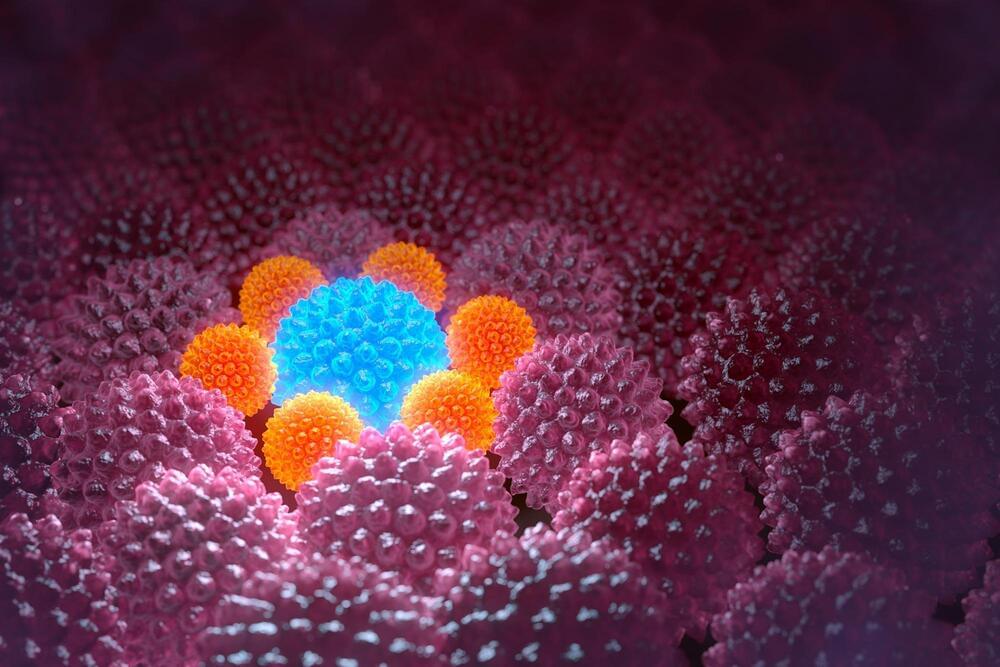A close-knit pair of newborn stars are kicking up shock waves — and seeding the material of their future planets with organic molecules.


Check out all the on-demand sessions from the Intelligent Security Summit here.
It’s as good a time as any to discuss the implications of advances in artificial intelligence (AI). 2022 saw interesting progress in deep learning, especially in generative models. However, as the capabilities of deep learning models increase, so does the confusion surrounding them.
On the one hand, advanced models such as ChatGPT and DALL-E are displaying fascinating results and the impression of thinking and reasoning. On the other hand, they often make errors that prove they lack some of the basic elements of intelligence that humans have.

What were the first moments of the Universe like? It’s a mystery that scientists have been trying to unravel for decades. The ALICE collaboration at CERN is a specialist in the subject: this detector (A Large Ion Collider Experiment) was designed to study quark-gluon plasma, a phase of matter that would have existed just after the Big Bang. And the team recently succeeded in recreating and characterizing this very first hypothetical material, using the Large Hadron Collider (LHC).

Nature, red in tooth and claw, is rife with organisms that eat their neighbors to get ahead. But in the systems studied by the theoretical ecologist Holly Moeller, an assistant professor of ecology, evolution and marine biology at the University of California, Santa Barbara, the consumed become part of the consumer in surprising ways.
Moeller primarily studies protists, a broad category of unicellular microorganisms like amoebas and paramecia that don’t fit within the familiar macroscopic categories of animals, plants and fungi. What most fascinates her is the ability of some protists to co-opt parts of the cells they prey upon. Armed with these still-functioning pieces of their prey, the protists can expand into new habitats and survive where they couldn’t before.

Commercial Purposes ► [email protected].
–
The kind of rapid technological advancement that humanity has seen in the last 100 years has been the story of the century. Thanks to this rapid advancement, the idea that humanity is approaching a “singularity” has moved from the realm of science fiction to a concern for serious scientific debate. Some people believe that AI will take over the world soon. In fact, some experts predict that this technological singularity will happen within the next 30 years. The idea that artificial intelligence will take over the world and humans will no longer be in charge is scary and opens up the stage for serious debate. Today we are on the brink of a technologically activated change that will fundamentally disrupt every human affair and the entire human ecosystem, as it exists today. SO what is technological singularity? And how will it change our very own reality? Let’s understand it.
-
“If You happen to see any content that is yours, and we didn’t give credit in the right manner please let us know at [email protected] and we will correct it immediately”
“Some of our visual content is under an Attribution-ShareAlike license. (https://creativecommons.org/licenses/) in its different versions such as 1.0, 2.0, 30, and 4.0 – permitting commercial sharing with attribution given in each picture accordingly in the video.”
Credits: Ron Miller, Mark A. Garlick / MarkGarlick.com.
Credits: NASA/Shutterstock/Storyblocks/Elon Musk/SpaceX/ESA/ESO/ Flickr.
00:00 Intro.
2:54 what is a singularity.
7:08 what happens to human intelligence.
8:10 Elon Musk — Neuralink.
8:56 when will technological singularity occur?
#insanecuriosity #technologicalsingularity #ai

The Royal Meteorological Society, which runs the Weather Photographer of the Year competition, has posed an intriguing question: Can artificial intelligence (AI) win a photography competition?
To answer this, the Society drew up a Turing test in which the viewer is invited to guess which is an AI image and which is an actual award-winning photo.
The Turing test, created by Alan Turing in 1950, is a test of a machine’s ability to exhibit intelligent behavior indistinguishable from a human.
The scientist, Marvin Minsky (1927−2016) was one of the pioneers of the field of Artificial Intelligence, having founded the MIT AI Lab in 1970.
Brain computer interface. People even so called experts are so narrow they have lobotimized their vision.
Share your videos with friends, family, and the world.

Scientists at the University of California, San Francisco (UCSF) have engineered molecules that act like “cellular glue,” allowing them to direct in precise fashion how cells bond with each other. The discovery represents a major step toward building tissues and organs, a long-sought goal of regenerative medicine.
Adhesive molecules are found naturally throughout the body, holding its tens of trillions of cells together in highly organized patterns. They form structures, create neuronal circuits, and guide immune cells to their targets. Adhesion also facilitates communication between cells to keep the body functioning as a self-regulating whole.
In a new study, published in the December 12, 2022, issue of Nature, researchers engineered cells containing customized adhesion molecules that bound with specific partner cells in predictable ways to form complex multicellular ensembles.